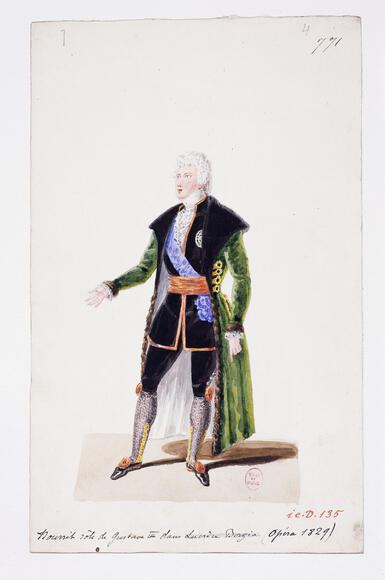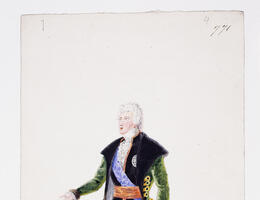Gustave III ou le Bal masqué

Opéra historique en cinq actes. Créé à l'Opéra de Paris.
The libretto for this opera was originally intended for Rossini, before falling to Auber, and its subject was subsequently reused for Verdi’s Un ballo in maschera, with a few concessions for the censors. It is a French grand opera in five acts, written for the same dramatic tenor as La Muette de Portici (1828), Adolphe Nourrit (1802-1839), and for the very young Cornélie Falcon (1814-1897), who had just made her debut in Robert le diable, and who gave her name to the “emploi” (role) of dramatic soprano. The treatment of the finales prefigures the type of voice of, say, a Marie Capdeville (1820-1872) in Halévy’s Le Guitarrero (1841) more than that of a Rosine Stoltz (1815-1903) in Donizetti’s La Favorite (1840), in other words, the role was written for a grand soprano more in the style of a lyric mezzo than a Rossinian contralto. The excellent cast also included the bass Nicolas Levasseur (1791-1871), who had begun his career alongside Nourrit’s father. The first two acts contain numerous choruses and it is the tenor, singing in a high, graceful tessitura, who figures most prominently. Weaving a counterpoint with the three generations of French singers at his disposal, Auber constructed a third act in the form of a crescendo: initially, there are raised voices and contrasting registers from Amélie, then a duet of thwarted love in which Gustave adopts deeper tones to converse in unison with the woman he loves, and finally Ankastrom adds his almost Mozartian bass to the proceedings. This scenario is repeated for the fourth act, switching around the disposition of the voices and expanding the ensemble to a quintet. As early as 1861, the musicographer, Gustave Bertrand, noted that the ballet in the fifth act was often performed separately at the end of an evening of opera, particularly abroad. It is also this fragment which was recorded along with the work’s overture by the conductor Richard Bonynge, and paired with his recording of Le Domino noir. Despite a critically-acclaimed stage production in Metz and Dijon in 2003, the work has not earned its place in the repertory. And yet, it presents an interesting synthesis of French vocal types from the first half of the 19th century, at the same time as a subject which was highly characteristic of the period (political intrigue, recourse to a witch in the genre of Macbeth and extensive use of dance). It is perhaps the lack of easily isolatable solo numbers in the score which made it less attractive than other later productions created by the same singers, like Halévy’s La Juive (1835).

